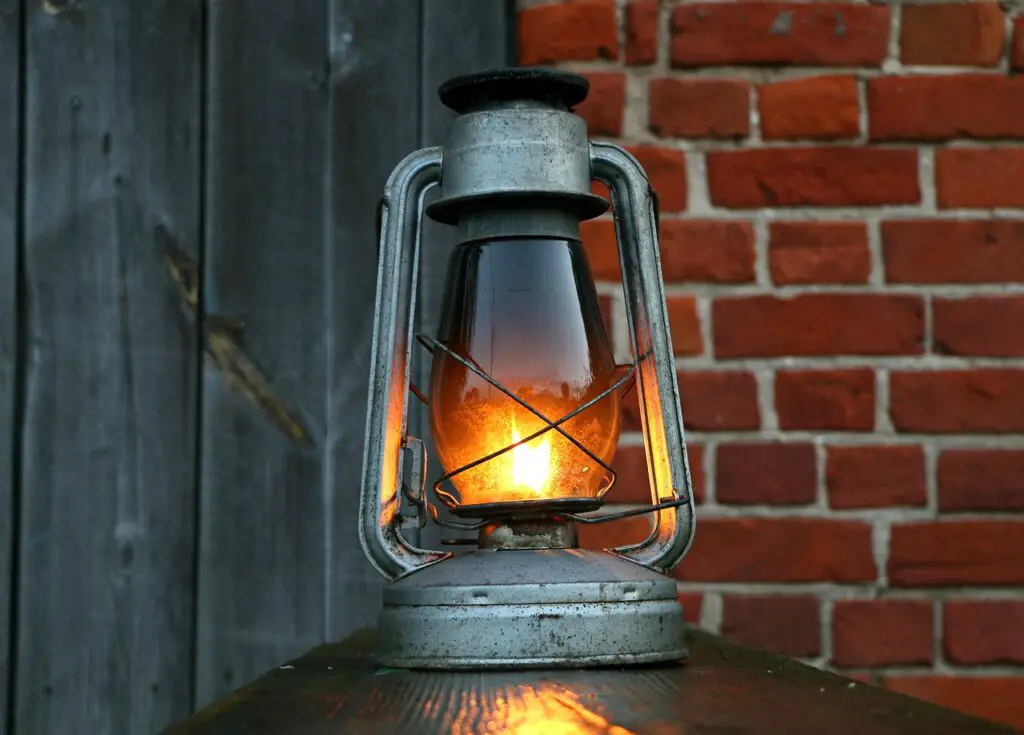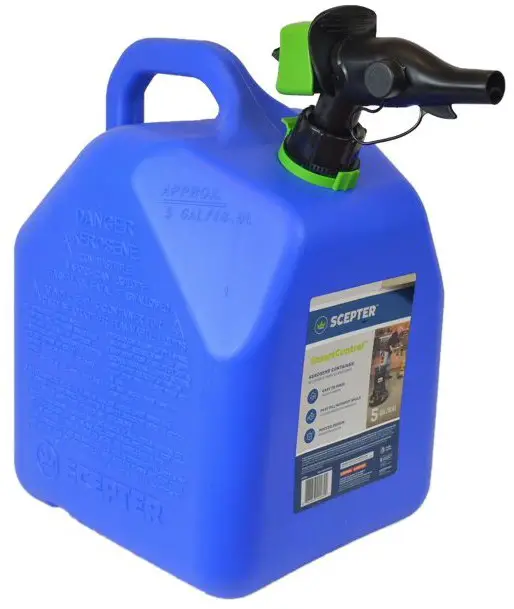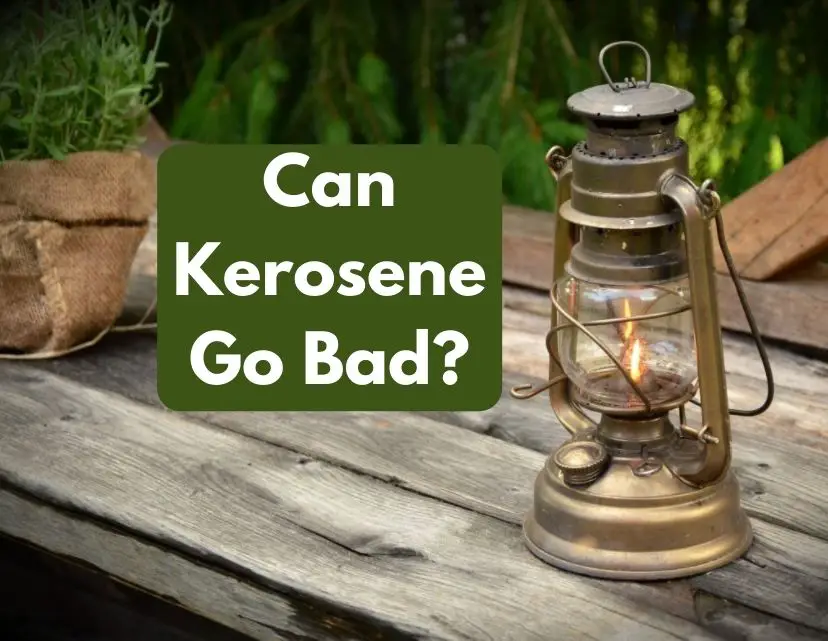Kerosene is a fuel that has been used for centuries, and many people still rely on it today. However, does kerosene go bad?
Yes, kerosene can go bad due to two factors: condensation and bacteria/mold that form sludge, breaking the kerosene down. Storing kerosene properly will help it last longer, and can keep good for between 2 to 5 years.
Why Does Kerosene Go Bad?

There are two main causes for kerosene spoilage: condensation, and sludge buildup.
Kerosene Going Bad Due To Condensation
Condensation occurs when varying temperatures on the outside of where your kerosene is stored cause moisture to be pulled from the air inside your kerosene storage to be pulled, allowing condensation to form along the walls and then drip down and mix with the kerosene.
If your kerosene has water in it, it’ll clog up the wick and/or make a crackling or hissing sound when the fuel is burned.
Kerosene Sludge Buildup
Microorganisms like mold and bacteria live in kerosene, and over time those two elements can break down the kerosene to form a sludge.
This sludge will affect the efficiency of the unit you’re using the kerosene in and can cause the unit to fail prematurely, costing you time, headaches, and money.
Shelf Life Of Kerosene
So how long is kerosene good for?
Kerosene can last for between two to five years if it’s stored properly.
Factors that will help how long does it take for kerosene to go bad is storing it improperly (like in a container in a leaky seal or in a lamp), or storing it in areas that fluctuate in temperature, like out in the sun on your back porch.
How To Store Kerosene Properly

To help your kerosene last as long as possible, you should store it in an opaque plastic container or metal drum in a dark and cool place, like a basement or shed.
You should also make sure the container you’re storing the kerosene in is airtight so condensation doesn’t have a chance to form.
How To Tell If Kerosene Is Bad
If you’re unsure if your kerosene has gone bad, there are a few things you can do to test it.
First, check the color of the kerosene. If it’s darker than usual or has a yellow tinge to it, that’s a sign that it’s going bad due to sludge.
If you notice bubbles at the bottom, that indicates that the kerosene has condensation in it, as water is heavier than kerosene and will sink to the bottom.
Another way to tell if kerosene has gone bad is by smell. If it smells sour or like gasoline, that means the fuel has begun to break down.
Can You Use Bad Kerosene?
You should be able to use some of the spoiled kerosene, but you’ll need to filter it first.
If you see bubbles at the bottom due to condensation, slowly pour the fuel out at the top of the container into a new container, stopping before you let any of the water bubbles into the new mix.
If your kerosene has sludge in it, run it through coffee filters several times to separate the sludge from the kerosene.
Once you’ve filtered your fuel, you can then mix it with some fresh kerosene and you’ll be ready to go.
How To Dispose Of Kerosene
If you have bad kerosene that you can’t filter and use, you’ll need to dispose of it properly.
Take It To A Hazardous Waste Facility
The best way to do this is to take it to a household hazardous waste (HHW) facility in your area.
Don’t pour it down the drain as this can contaminate the water supply, and don’t just throw it out with the trash as this can be a fire hazard.
Also be sure not to mix the kerosene with other fluids or fuels, as most hazardous waste facilities won’t accept it.
Kerosene Evaporation
A final option is disposing of kerosene through evaporation.
This method should be a last-ditch effort and is not preferable to the options above, but will get the job done in a pinch.
Leave the kerosene in an open container in a well-ventilated area, away from kids and pets.
The sun will evaporate the kerosene, and once that’s completed, triple-wrap the old container in plastic bags and you can toss it in the trash can.
Kerosene Storage & Shelf Life FAQs
While it’s better to store kerosene outside like in a shed, storing kerosene in your garage is acceptable as long as you take a few precautions.
First, make sure the container you’re using is airtight and opaque so light doesn’t cause the kerosene to degrade.
Second, don’t store the kerosene near anything that sparks or near other flammable materials.
Lastly, make sure there’s enough ventilation in your garage.
Ideally you should store kerosene in an outdoor location protected from direct sunlight like in a shed or under a covered deck or porch.
If that’s not an option, you can store it in your garage provided there’s decent airflow and ventilation.
Store your kerosene in an opaque plastic container, away from direct sunlight, and ideally in a temperature-controlled environment in order to get the most shelf life out of your kerosene fuel.
You should not use a gasoline can to store kerosene. Only use new containers that are marked for kerosene storage. These are usually blue plastic containers.
Wrapping Things Up
We hope this article has helped answer some of your questions about kerosene storage and shelf life.
While kerosene can go bad, with proper storage it can last for years.
Be sure to keep it in a cool, dark place in an airtight container to help it last as long as possible.
If you have bad kerosene, be sure to dispose of it properly by taking it to a hazardous waste facility or evaporating it outdoors.
Do you have any other tips for storing kerosene? Let us know in the comments below.
Check out our other helpful related guides on RVs and camping while you’re here:
- What’s the freezing point of gasoline?
- How long does Jetboil fuel last?
- How to keep a fire going
- How long does wood take to dry after rain?
- The best campfire cooking kit options
- The best camping water containers
- The best camping string lights
- How to lock a tent
- What is a tent vestibule?
- How to make a DIY camping bed
- Tents that fit a queen air mattress
- The best heated camping chairs
- Our guide to cowboy camping

